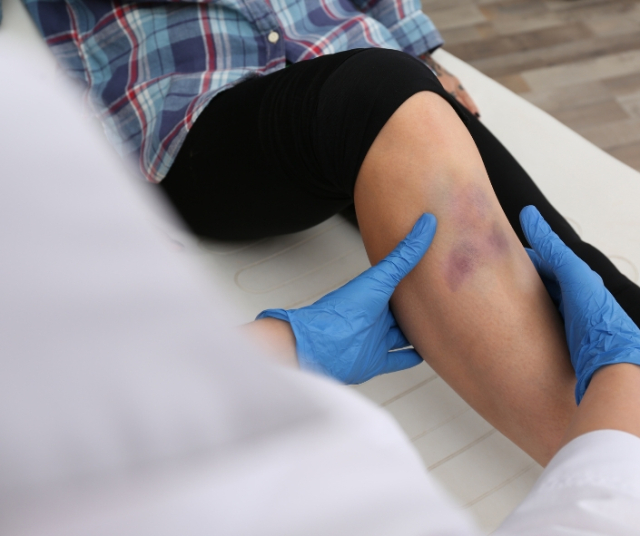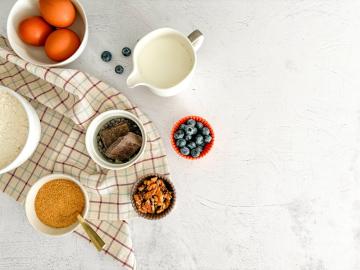Bumps and bruises are common injuries that we all experience at some point in our lives. Whether due to a fall, an accidental blow, or during sports, these injuries can be painful and uncomfortable. Although they are usually not serious, they can cause concern and affect our quality of life. Luckily, there are numerous strategies and techniques to effectively treat bumps and bruises and promote a quick recovery. Join us as we explore in detail what bumps and bruises are, how to properly treat them in various situations, and what preventative measures you can take to reduce their incidence in the future.
What are Blows?
A bump, also known as a contusion, is a soft tissue injury that occurs when blood vessels under the skin break due to a blow or trauma. This causes a buildup of blood in the affected area, which can result in inflammation, pain, and skin discoloration.
What are Bruises?
Bruises, also called ecchymoses, are the visible manifestation of a blow. They appear as areas of discoloration on the skin, which can vary in color from dark red to purple, blue or green, depending on the depth and severity of the tissue damage.
Common Causes of Bumps and Bruises.
- Falls: Falls are one of the main causes of bumps and bruises, especially in older people or during high-risk sports.
- Domestic Accidents: Hitting furniture, doors or household equipment can cause bruises.
- Sports Injuries: Contact sports or intense physical activities can result in bumps and bruises.
- Traffic Accidents: Car or other accidents can cause traumatic injuries that result in bruises.
Treatment of Bumps and Bruises.
Proper treatment of bumps and bruises can help relieve pain, reduce inflammation, and speed up the healing process. Here are some effective strategies and techniques you can use:
Rest and Protection of the Affected Area.
After suffering a bump or bruise, it is important to rest and avoid activities that could worsen the injury. If possible, use a bandage or splint to immobilize the affected area and protect it from future damage.
Ice Application.
Applying ice is one of the first measures you should take to reduce inflammation and pain. Wrap an ice pack or a bag of frozen peas in a cloth and apply it to the affected area for 15-20 minutes every hour for the first 24-48 hours after the injury.
Compression.
Wrap the affected area with an elastic bandage to apply compression and reduce swelling. Make sure not to wrap too tightly, as this can affect blood circulation.
Elevation.
Keep the affected area elevated above heart level as much as possible to reduce swelling and improve blood flow to the injured area. You can support the area with pillows or cushions to keep it elevated while you rest.
Analgesics and Anti-inflammatories.
To relieve pain and reduce inflammation, you can take over-the-counter pain relievers such as ibuprofen or acetaminophen. Nonsteroidal anti-inflammatory drugs (NSAIDs) are especially useful for controlling pain and inflammation associated with bumps and bruises.
Heat Application.
After the first 48 hours, you can alternate ice with heat application to help relax muscles and improve blood circulation to the affected area. You can use a hot compress or heating pad to apply heat for 10-15 minutes several times a day.
Massage and Gentle Stretches.
Once the swelling has subsided, you can begin performing gentle massages and stretches on the affected area to improve blood circulation and promote healing. Use gentle, circular motions with your fingers to massage the area, and perform gentle stretches to maintain flexibility and mobility.
Skin care.
It is important to take care of your skin during the recovery process to prevent infection and promote faster healing. Keep the area clean and dry, and apply a gentle moisturizer to help keep skin healthy and supple.
Blow Prevention.
In addition to treating injuries once they occur, it is important to take steps to prevent bumps and bruises in the first place. Here are some helpful strategies to reduce your risk of injury:
Use Protective Equipment.
When playing sports or strenuous physical activities, be sure to wear appropriate protective equipment, such as helmets, knee pads, elbow pads, and mouth guards, to reduce the risk of traumatic injuries.
Practice Sports Safely.
Follow the rules and guidelines established for each sport and ensure you receive adequate instruction and supervision before participating in sporting activities. Perform a proper warm-up before exercise to prepare your muscles and reduce the risk of injury.
Maintain an Active and Healthy Lifestyle.
Maintaining a healthy, active lifestyle can help strengthen muscles and improve physical endurance, which can reduce the risk of injury. Exercise regularly, eat a balanced diet rich in fruits, vegetables, and lean proteins, and make sure you get enough sleep each night to promote overall good health.
Avoid Risky Situations.
Avoid situations that may increase your risk of injury, such as excessive alcohol consumption, recreational drug use, or engaging in dangerous or illegal activities.
Bumps and bruises are common injuries that can occur anytime, anywhere, but with proper treatment and appropriate preventative measures, most people can make a full recovery in a short time. It is important to take the proper steps to treat injuries as soon as they occur, using techniques such as icing, compression, and elevation to reduce swelling and pain. Additionally, taking preventative measures, such as maintaining a safe environment, wearing appropriate protective equipment, and playing sports safely, can help reduce the risk of bumps and bruises in the future. Always remember to consult a healthcare professional if you experience severe pain, persistent swelling, or any other injury-related concerns. With proper care and attention, you can make a full recovery and return to your normal activities as soon as possible.






